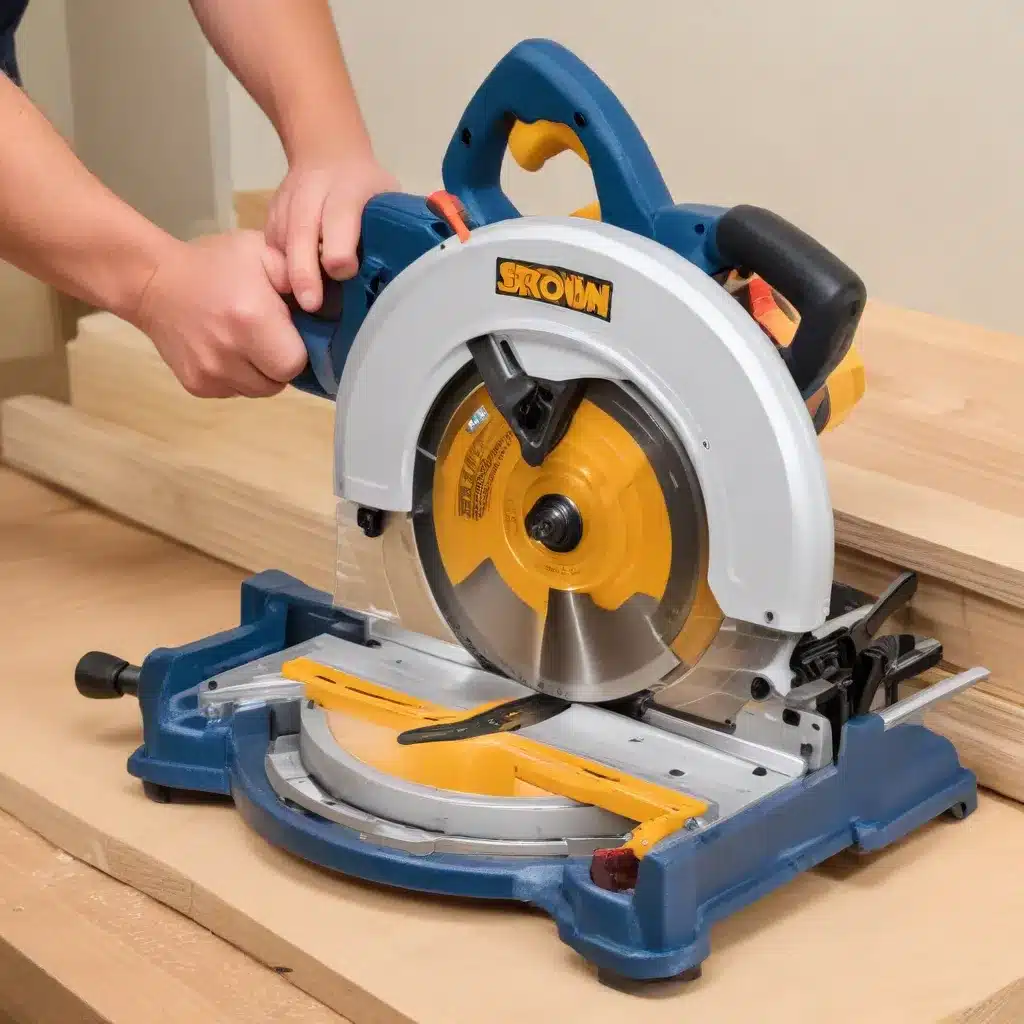
As an experienced home improvement consultant, I’ve seen firsthand how the right miter saw can make or break a crown molding project. Whether you’re a seasoned DIYer or a professional contractor, having the proper tool for the job is crucial when it comes to achieving flawless, gap-free transitions between your walls and ceilings.
In this comprehensive guide, we’ll explore the key features to look for in a miter saw, delve into precision techniques for crown molding installations, and review some of the top miter saw models from leading brands like Dewalt, Bosch, and Makita. By the end, you’ll be equipped with the knowledge to select the perfect miter saw for your next crown molding renovation.
Types of Miter Saws
The three primary categories of miter saws are compound miter saws, sliding compound miter saws, and dual-bevel miter saws. Each type offers unique advantages, so it’s important to understand the differences when choosing the best fit for your crown molding needs.
Compound Miter Saws are the most basic and affordable option, allowing you to make angled cuts (miters) as well as bevel cuts. These saws are well-suited for standard crown molding installations, able to handle materials up to 5-1/2 inches wide.
Sliding Compound Miter Saws add a sliding mechanism to the saw head, enabling you to cut wider workpieces up to 12 inches. This extra capacity is particularly useful for larger crown molding profiles or baseboard applications.
Dual-Bevel Miter Saws take the compound miter saw a step further, offering the ability to tilt the blade left or right for even more precise bevel cuts. This is a valuable feature when working with complex crown molding designs that require intricate miter and bevel adjustments.
Key Features for Crown Molding
When selecting a miter saw for crown molding installations, there are a few crucial features to consider:
Blade Size and Bevel Capacity: Look for a saw with a 10- or 12-inch blade that can accommodate the height of your crown molding. The bevel capacity should allow for at least a 45-degree angle cut on both sides.
Miter Angle Adjustment: Precise miter angle adjustment, ideally with positive stops at common crown molding angles (such as 31.6 degrees), will simplify the setup and ensure accurate cuts.
Dust Collection System: Effective dust collection is a must-have, especially when working with fine trim and molding, to maintain a clean workspace and protect your lungs.
Precision and Accuracy in Crown Molding
Achieving a flawless crown molding installation requires both thoughtful cutting techniques and meticulous attention to detail. Let’s explore some key strategies for maximizing precision and accuracy.
Cutting Techniques
Miter Cut Calculations: Understanding how to properly calculate miter angles based on the wall and ceiling geometry is crucial. Resources like the Sawblade.com Miter Saw Angle Calculator can take the guesswork out of these complex computations.
Coping Saw Techniques: Complementing your miter saw, a quality coping saw is an essential tool for cutting the intricate profiles that allow crown molding pieces to fit seamlessly together at inside corners.
Minimizing Gaps and Mistakes
Proper Workpiece Positioning: Ensuring the crown molding is firmly secured and aligned against the saw fence and fences is key to achieving consistent, gap-free joints.
Fine-Tuning the Miter Angle: Don’t be afraid to make minor adjustments to the miter angle until you achieve a perfect fit. Using a digital angle finder can help you dial in the precise angle.
Top Miter Saw Brands for Crown Molding
When it comes to crown molding installations, three brands consistently stand out: Dewalt, Bosch, and Makita. Let’s take a closer look at what each has to offer.
Dewalt Miter Saws
Dewalt is a longtime favorite among carpenters and trim specialists. Their DWS779 12-Inch Sliding Compound Miter Saw is a popular choice, offering a large 12-inch blade, a sliding mechanism for wider cuts, and a robust dust collection system. The company’s DW713 10-Inch Compound Miter Saw is also a solid, budget-friendly option for crown molding work.
Bosch Miter Saws
Bosch is known for its innovative features and precision engineering. The Bosch GCM12SD 12-Inch Dual-Bevel Glide Miter Saw is a standout, with its dual-bevel capability and smooth, accurate glide mechanism. For a more compact solution, the Bosch CM10GD 10-Inch Compact Miter Saw provides impressive performance in a space-saving design.
Makita Miter Saws
Makita is another brand favored by professional carpenters. Their LS1019L 10-Inch Dual-Bevel Sliding Compound Miter Saw combines a generous cutting capacity with precise bevel adjustments, making it a versatile choice for crown molding installations. The LS1018 10-Inch Compound Miter Saw offers a more affordable alternative without sacrificing Makita’s renowned quality.
Selecting the Right Miter Saw
When choosing a miter saw for crown molding, there are a few key factors to consider:
Budget Considerations: Miter saws can range from a few hundred dollars for a basic compound model to well over a thousand for top-of-the-line sliding or dual-bevel saws. Determine your budget and prioritize the features that matter most to you.
Workspace Requirements: If you’re working in a small shop or on-site, a compact, lightweight miter saw may be the better choice. Conversely, if you have ample space and need to handle wider crown molding, a sliding compound or dual-bevel saw could be the way to go.
Desired Features: Consider must-have features like bevel capacity, miter angle adjustability, dust collection, and cutting capacity. Assess which capabilities will best support your crown molding projects, both now and in the future.
Ultimately, the right miter saw for crown molding is the one that strikes the perfect balance between your budgetary constraints, workspace limitations, and performance requirements. By carefully evaluating your needs and the options available, you’ll be well on your way to achieving flawless crown molding installations time and time again.
For more home improvement insights and project inspiration, be sure to visit Reluctant Renovator. Their experts are here to help guide you through every step of your renovation journey, from budgeting and design to tool selection and installation.



